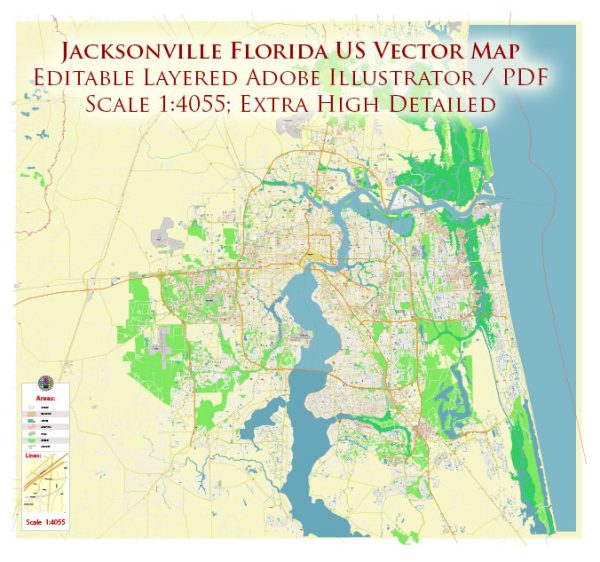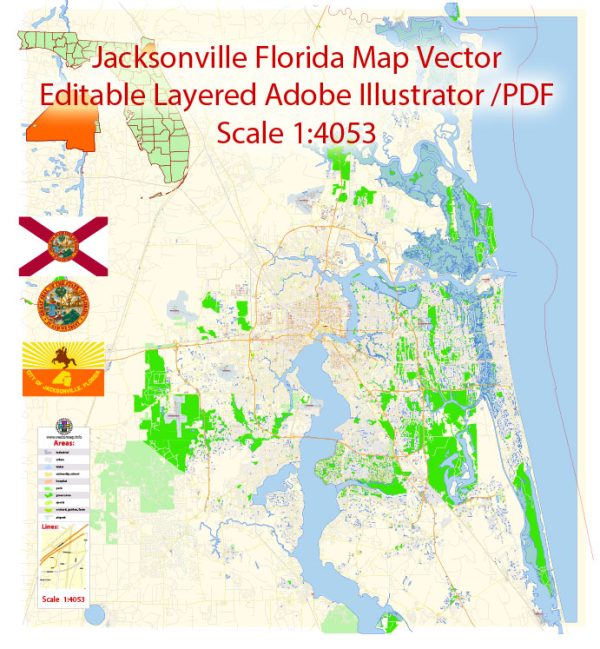Jacksonville, Florida, is a city with a diverse architectural landscape that reflects its rich history and modern development. Here’s a brief description of the architecture in Jacksonville:
- Historic Southern Architecture: Many areas of Jacksonville feature historic architecture that reflects the city’s Southern heritage. This includes antebellum and Victorian-style homes with features such as wrap-around porches, ornate detailing, and large oak trees draped with Spanish moss.
- Art Deco: Downtown Jacksonville is home to several Art Deco buildings, dating back to the early 20th century. These structures feature sleek lines, geometric patterns, and decorative elements, reflecting the style’s emphasis on modernity and luxury.
- Mid-Century Modern: Like many American cities, Jacksonville has mid-century modern buildings, particularly in its suburbs. These designs often feature flat roofs, large windows, and open floor plans that embrace the outdoors. The Jacksonville Landing, a now-demolished riverfront complex, was a prime example of mid-century modern architecture.
- Contemporary Skyscrapers: Downtown Jacksonville boasts a growing number of contemporary skyscrapers, reflecting the city’s modernization and economic development. These glass and steel structures often house offices, residential units, and retail spaces, contributing to the city’s evolving skyline.
- Revitalized Historic Buildings: Preservation and adaptive reuse efforts in Jacksonville have led to the revitalization of many historic buildings. Old warehouses and factories have been transformed into trendy lofts, offices, and restaurants, preserving their unique architectural character.
- Coastal Influences: As a coastal city, Jacksonville’s architecture often incorporates elements inspired by its seaside location. Beachfront homes and waterfront properties feature designs that maximize views and the coastal lifestyle, with features such as balconies, large windows, and open spaces.
- Eclectic Neighborhoods: Jacksonville is a city of diverse neighborhoods, each with its own architectural character. Riverside and Avondale, for example, are known for their historic homes, while San Marco boasts Mediterranean and Spanish-style architecture. The urban core and downtown areas have a mix of modern and historic structures.
- Cultural and Educational Institutions: Jacksonville has several cultural and educational institutions with notable architecture. The Cummer Museum of Art and Gardens, designed in a neoclassical style, and the Jacksonville Main Library, with its contemporary design, are two examples of the city’s architectural diversity.
- Religious Buildings: Jacksonville is home to a variety of religious buildings, including churches, synagogues, and temples. These structures range from historic Gothic cathedrals to contemporary designs, showcasing the city’s cultural and religious diversity.
Overall, Jacksonville’s architecture reflects its historical roots, cultural diversity, and modernization as a growing urban center in Florida. The city’s blend of architectural styles and influences make it a visually intriguing and dynamic place to explore.



 Author: Kirill Shrayber, Ph.D.
Author: Kirill Shrayber, Ph.D.